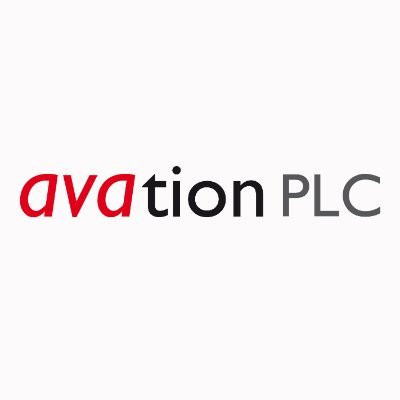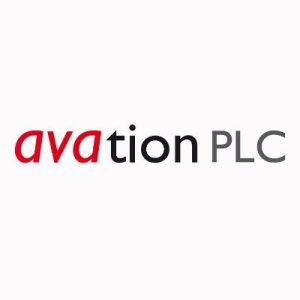Avation plc (LON:AVAP) Executive Chairman Jeff Chatfield caught up with DirectorsTalk for an exclusive interview to discuss AT2 72 engines and the SAF certification,low CO2 transition, the relationship with ATR, purchase rights value, funding the aircraft, and other sources of growth.
Q1: Could you explain for us the ATR 72 change of engines and the ATR SAF certification push, and what that actually means for investors?
A1: We are one of the world’s biggest, if not the biggest, option holder over ATR aircraft, having delivered many aircraft, probably marketed 37 or 38 so far, and we currently own 20. ATR are a subsidiary of Airbus and they are, if you like, the most high-tech, low-carbon plane in the world.
So, what we’ve done is we’ve ordered 10 firms, so we’ve converted our options into 10 firm aircraft and we’ve extended our option book out to the year 2034 for another 24 aircraft. Now, all those aircraft are like right here, right now, they can all do 50% sustainable aviation fuel and by mid next year, they’ll be able to use 100% sustainable aviation fuel. Notwithstanding that, they’re one of the probably the lowest or they are the lowest CO2 emission per trip compared with a jet on that same size trip or same size plane. So they’re very, very efficient, they’re green, and they’re carbon friendly.
As the engines evolve, the order will evolve so right now, we’re delivering a new type of engine which is more fuel efficient and less carbon, and in the next 10 years, there’ll obviously be improvements, they’re talking about an Evo component, which is the evolution, which could involve electric or hydrogen or whatever it involves. So, as technology develops, our order will develop.
We lease all sorts of aircraft, but for that segment, we have a 10-year plan, a modest number, very, very good position commercially, probably the world’s biggest option book, and we are definitely taking more of those aircraft than probably anyone else in the world. So, we’re well placed.
Q2: Now, apart from saving the planet, why are lower CO2 emissions commercially important to airlines and lessors like Avation at the forefront of the low CO2 transition?
A2: Well, the governments of the world are forcing airlines to go low carbon. Whether you agree or disagree, the regulatory regime is such that you either pay a tax or go low carbon.
Q3: Now, the group has been partnering with ATR for some time now. Could you just tell us a little bit about the history of the relationship, where it is today and what you expect over the next decade?
A3: We’ve had a really positive relationship with ATR. They’re a subsidiary of Airbus and a few years ago, as you may remember, we were probably the sixth biggest customer of Airbus in the world and the relationship with ATR has been good over the last 14 years, I guess.
We’ve delivered, awarded about 38 aircraft, we’ve bought and sold them, we’ve traded them, we’ve leased them, we’ve been a strong financier and a customer of ATR and we’ve had a very positive working relationship.
ATR, it’s not like in the, if you like, the narrow body market, in the A320 market and 737 market, a lot of lessors take very speculative positions. The ATR market, the regional market’s different, it’s more of an airline market. Airlines like to order their own planes so they don’t have, they don’t sell, they try not to, ATR tries not to sell too many aircraft to lessors.
So we’re well placed in the sense that, we’re a reliable counterpart. We’ve been around for a while, we know how to finance them, and clearly, they’re comfortable with us and have said really nice things in their press release today.
So it’s a good working relationship.
Q4: Now, purchase rights value. It’s been a question mark for investors now, with some saying there is a difference between your share price and NAV. Does exercising some purchase rights help to prove that the value exists and that it’s real?
A4: Obviously the value exists. Very few companies have had the return that we’ve generated to shareholders over that period. We’ve very rarely raised any money from shareholders and self-generated a lot of profits and equity, and a lot of it’s come from purchase rights.
The reason it exists, if you like, is we were smart when we did the original order of aircraft for the Virgin Australia order. We acquired a lot of options so basically, we deliver one firm and have an option for a future delivery.
So, the term purchase right literally means option to purchase a new aircraft at some date so it’s not a fixed date, it means, when you want it and when it’s available. So, there are clearly and obviously a lot of value in those purchase rights on the balance sheet. Effectively, it’s the time value and the price difference between exercise and the market price. In doing 10 at the moment, it does firm up a value, they’re accretive in mathematical terms, they help shareholders a lot.
The difference in NAV, I don’t know, clearly the share price is way below NAV, which is why we’ve been doing other things like buying back shares. I don’t know that purchase rights are directly correlated to NAV, they’re part of the NAV, there’s also a billion dollars’ worth of aircraft in the NAV but I hope that’s answered your question.
Q5: So, should investors give the company more credit for the remaining purchase rights that you still hold?
A5: Well, obviously, we’ve got a 10-year plan in the regional segment. I think as the low carbon transition takes place, it is important for lessors and airlines to have a five or 10-year plan. You haven’t seen many people do it, and I think they should be, obviously.
So, clearly, this lays a foundation, in like the regional sector, for us to have a very strong business over the next 10 years and to further grow and develop and improve the position of the company.
It’s not all about purchase rights. It’s about owning aircraft, leasing them, and getting value from them to shareholders. So, I think it’s part of the story.
Q6: Exercising 10 purchase rights with an OEM list price of at least $225 million, it’s a big order. How will the aircraft be funded and paid for?
A6: Our price, because we got it a long time ago, is better than that. So, it’s of the order of a couple of hundred million, we know how to finance them.
So, when you buy an aircraft, you’ve got to pay PDPs, pre-delivery payments for the planes, and then on delivery, you usually finance it with a bank or another financing mechanism. At the moment, the best source of finance for these type of aircraft is green sustainable loans. If you remember, we did the world’s first green financing with a bank for commercial aircraft, which was done with Deutsche Bank, I think it was in 2019. It was actually for these sorts of aircraft.
So, there’s the banks, there’s sustainability financing, and there’s also what’s called ECA finance, which is export credit, which we do a lot of. The banks of the world love this stuff, they love low carbon, new technology, all that sort of stuff’s very important to commercial banks. They’ll often give you a discount on the interest rate on the coupon for it.
So, the short answer is banks, ECAs, sustainable people for the debt and the equities organically generated.
Q7: Now, these 10 ATR aircraft are clearly going to help Avation grow. Are there other sources of growth for the group as well as these?
A7: So this is our regional programme, clearly where the market is at the moment, the hot pot of the market for aircraft is in the narrow body sector, especially the A320 market, A321 market.
So, you’re looking at a number of opportunities in the secondary market for narrow body aircraft, because that’s the hot sector of our industry at the moment, post COVID is there’s a shortage of aircraft in the narrow body sector.
We have all the capabilities, we can transition an aircraft, in house we’ve got lawyers and a technical team and my marketing team, so we can acquire aircraft and transition them to another airline. That’s a source of growth, the secondary market in the narrow body sector.


